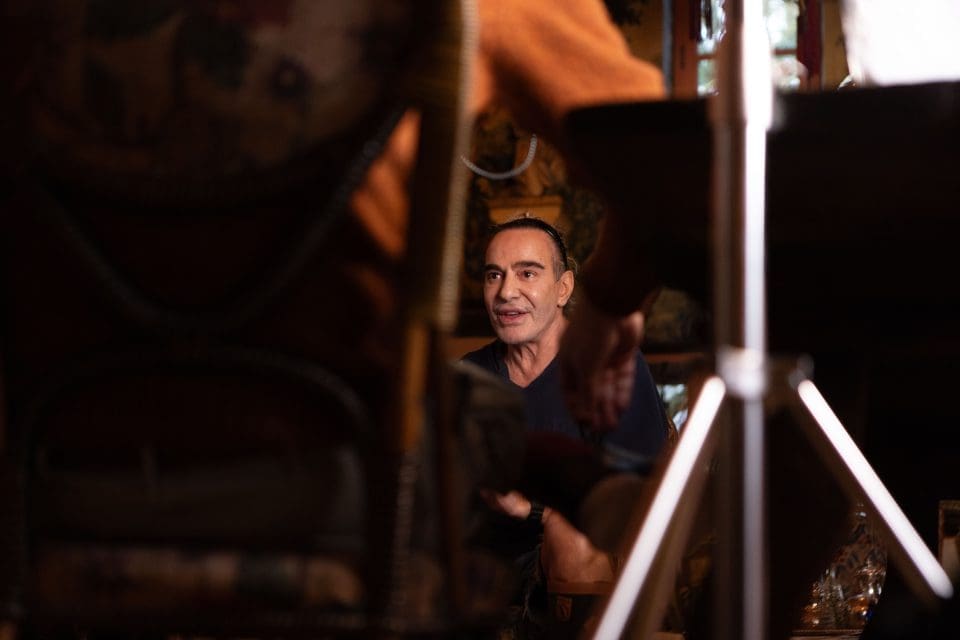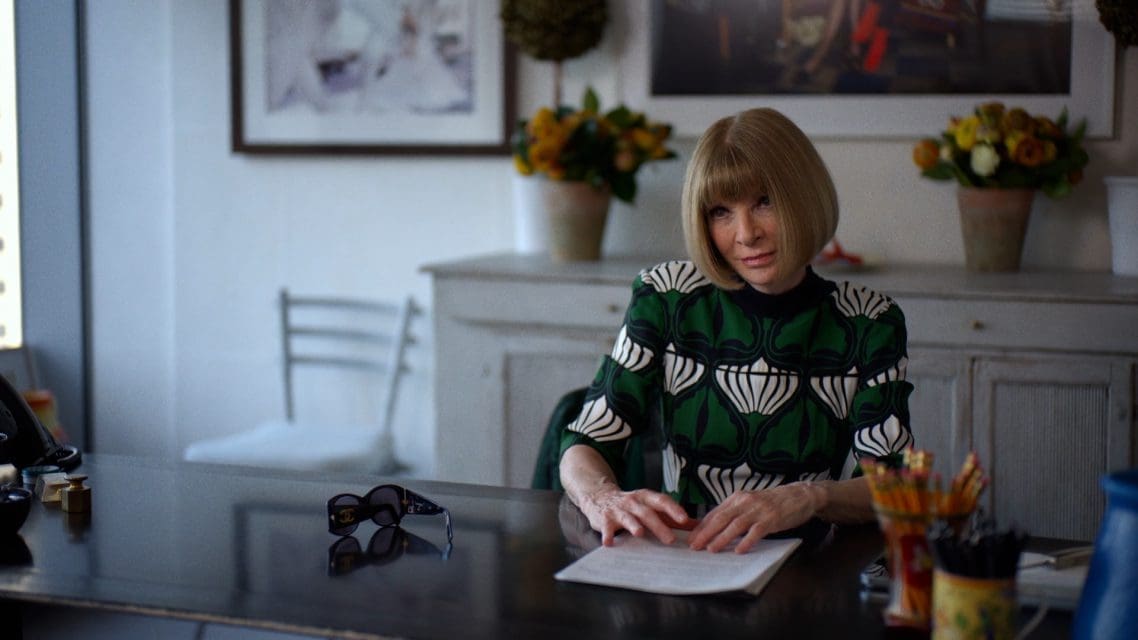
“It was a disgusting, foul thing, that I did,” remarks John Galliano in the opening beats of Kevin Macdonald’s new documentary, High & Low – John Galliano. The admission is the first thing the designer utters in the highly anticipated documentary, and arrives immediately after a montage of news clips from 2011, announcing that the then-creative director of Christian Dior—one of the industry’s most illustrious fashion houses—had been arrested for making anti-Semitic remarks in a Paris bar. We’re introduced to the designer backstage at Maison Margiela’s Artisanal 2022 show, Cinema Inferno; he sits alone with his thoughts, aside the unfolding commotion.
2024 marks a decade of Galliano at the house’s helm, and his most recent Artisanal show, staged in January, has been widely lauded as an industry-shifting spectacle and a rousing return to the early 2000s. In High & Low, the director, whose own career has been punctuated by award-winning features like The Last King of Scotland and documentaries such as Whitney and One Day in September, navigates the episodes that launched Galliano:from his childhood in Gibraltar and time at Central Saint Martins, to his relationships with fashion heavyweights like Anna Wintour and the events that followed the anti-semitic incident. (In 2011 he was found guilty and dropped from Dior as well as his eponymous label.)
“He was a cool cultural figure I was peripherally aware of,” recalls Macdonald of being a twenty-something in the 1980s. “Then of course, the incident was all over the papers. It was repulsive, but there was also something interesting about the conjunction of fashion, which is all about beauty, and the grotesqueness of what he said.” Consequently, he spent hours filming with Galliano and others in his orbit (friends and muses Kate Moss and Naomi Campbell; his original financial backer Johann Brun; Dior’s former CEO Sidney Toledano) as well as sourcing archive footage of fashion shows and media appearances, amongst them a particularly painful early breakfast show interview with Jayne Irving.
You might also like: Sheer Luxury: Yves Saint Laurent and the art of transparency
“My interest to begin with was this intellectual idea about cancel culture and forgiveness,” continues Macdonald, “how society deals with people who are cancelled.” Galliano came later, an appropriately unique vehicle for the subject. “In the end I became fascinated by him and his character,” says the filmmaker. Understanding, as opposed to any kind of takedown or platform for forgiveness, is the film’s central feature and was the starting point for both parties, while its title is lifted from a quote from another of Galliano’s muses, Suzanne von Aichinger. “It has multiple meanings, but it can also just be about his highs being very high and lows very low,” considers Macdonald.

One of Galliano’s most significant accomplishments was his hiring at Dior—which ultimately led the way for other British designers to be championed in Europe—and he remained there for 15 years, crafting a powerful visual language. What becomes plain in this chapter however, in addition to his mammoth talent, is the prolific cultural appropriation. “John was forged in the cauldron of a very different fashion world,” observes Vanessa Friedman, fashion editor at The New York Times. “One that was based on the idea that designers could pull inspiration from anything they wanted, really. That everything was fodder for the creative mind.” The curator, Katell le Bourhis adds: “He only sees the surface of things.”
As his acclaim intensified, so did the demand, and at his peak Galliano was overseeing more than 30 collections a year at Dior alone. Coupled with his intense work commitments was serious drug and alcohol abuse, and we learn stories of the designer urinating on stage, stripping in lifts and ruining hotel rooms. The death of his right-hand man Steven Robinson – and the suicide of his friend, Alexander McQueen,are presented both as tragic events and potential conclusions of Galliano’s own trajectory, and while unspoken, the concepts of complicity and enabling are quietly brought to the surface.

“I was surprised when he couldn’t remember how many instances there had been,” reflects Macdonald, alluding to a scene in which Galliano stumbles over the anti-Semitic incidents (there were three; he was sentenced for two). “Why, had he blocked it out? Was he deliberately lying?” Likening his model of work to a detective story, Macdonald also spoke with Phillippe Virgitti, one of the people who took Galliano to court. “It was very important, because you don’t know the consequences of something you say or do in public, or where the ripples of that are going to stop,” he notes.
The documentary concludes back at the Artisanal AW22 show, where Galliano, who in his previous life would don elaborate costumes to take a bow, is filmed running away as the audience applauds. Constructed as a film about a show, it was set in Arizona, which as the critic Sarah Mower noted in her review for Vogue Runway at the time, was where Galliano attended rehab in 13 years ago, “the place where he faced his demons.” “It dawned on me afterwards that John had been influenced by making the documentary,” Macdonald says of his own reading. “It was like therapy, doing the film. Obviously he’d done proper therapy after the incident, but he never talked about his work in relation to his life.”
High & Low – John Galliano is in cinemas now.





